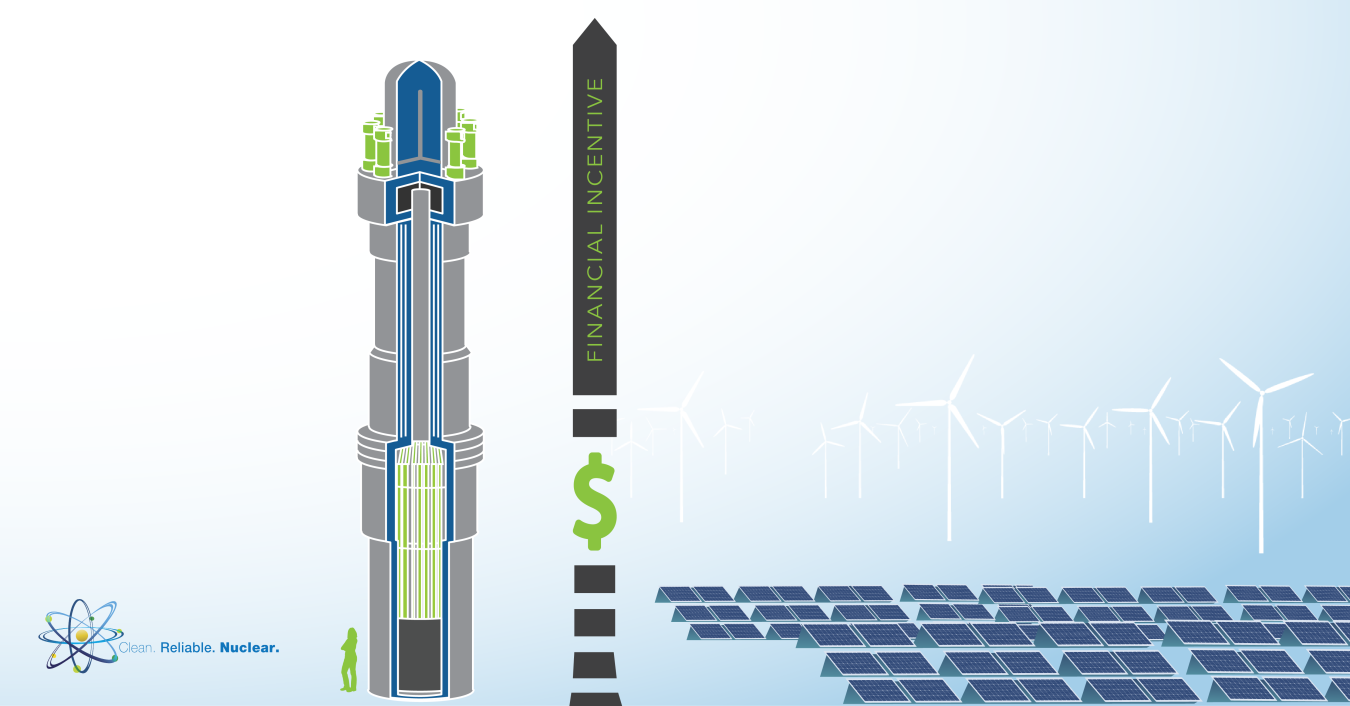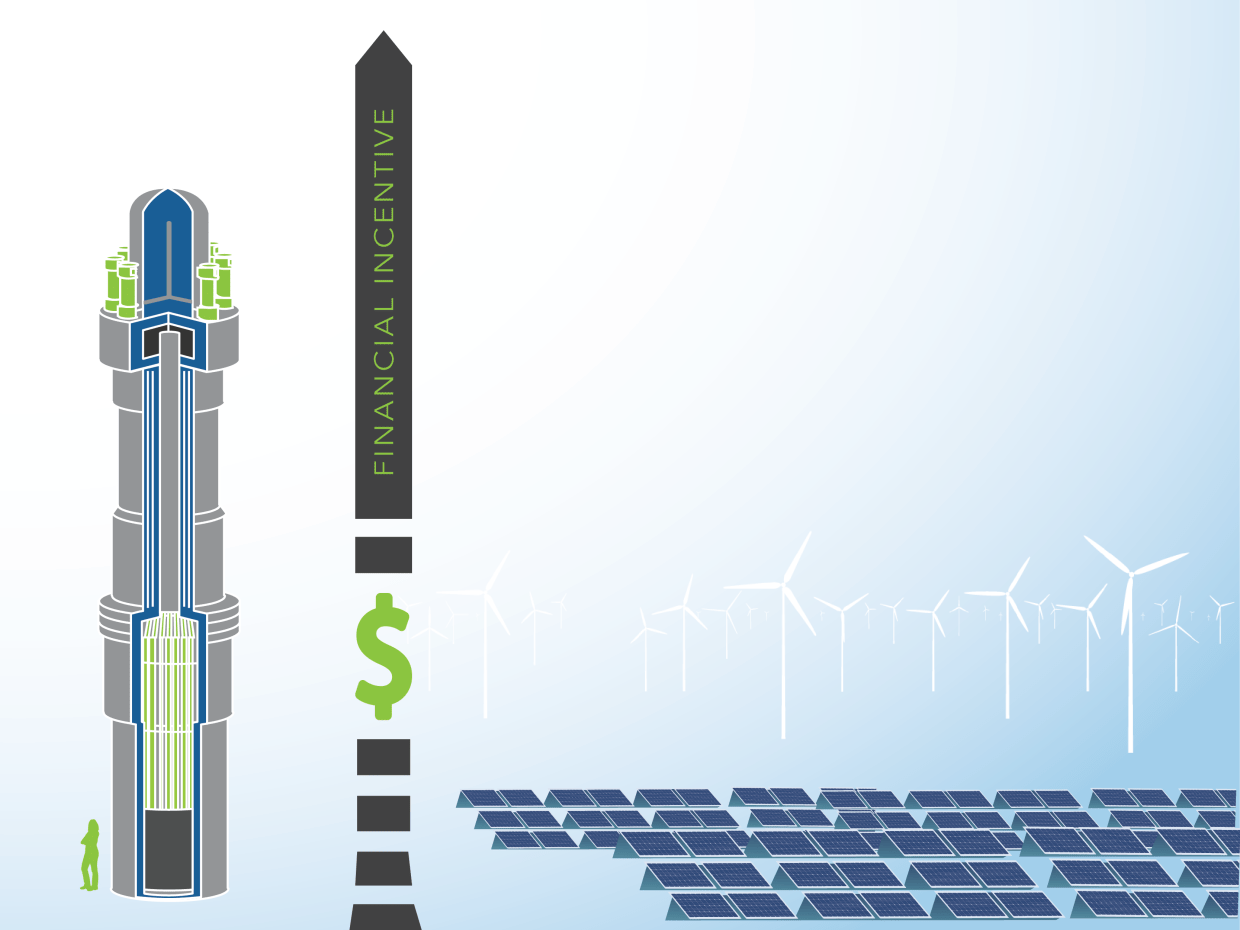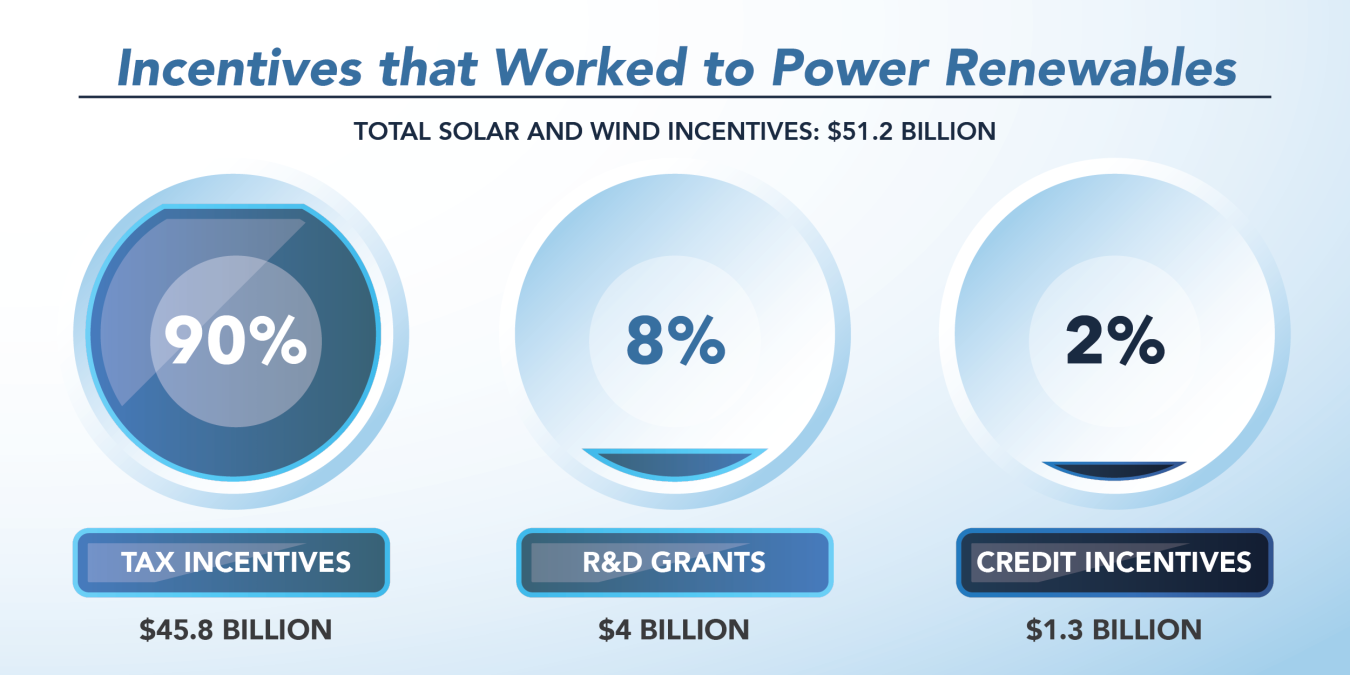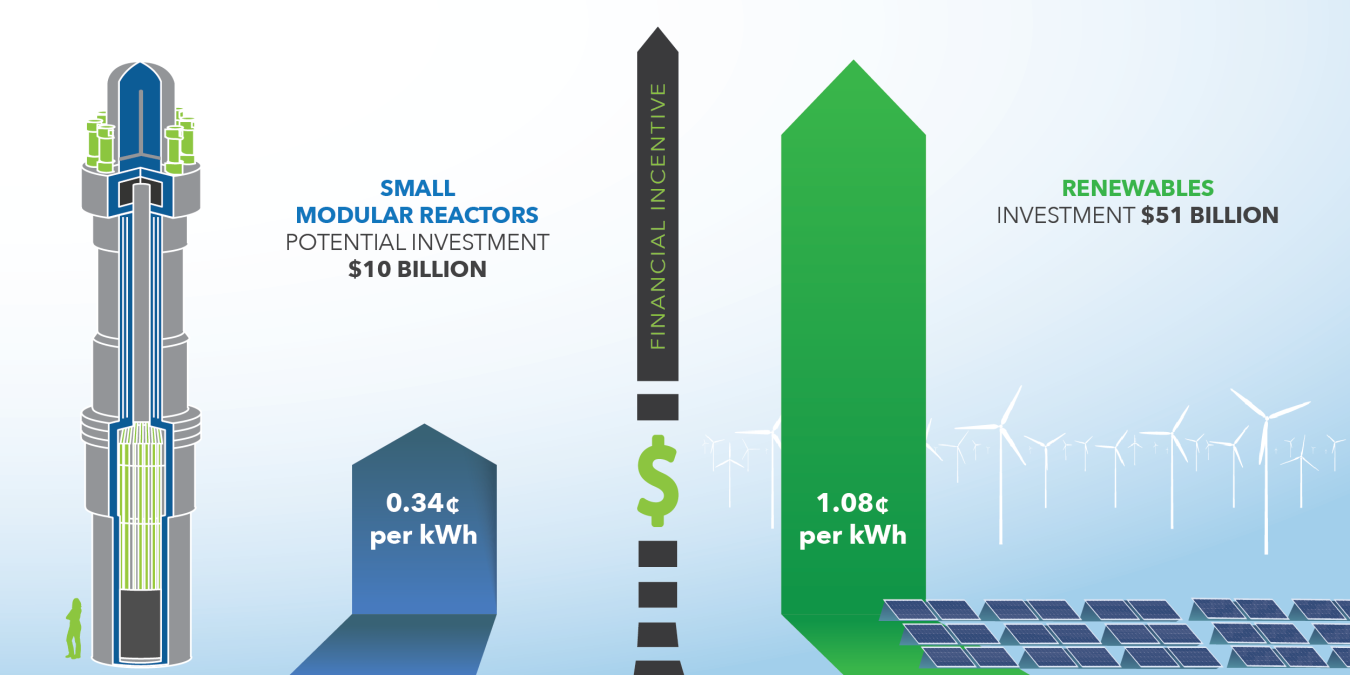U.S. Department of Energy report suggests a strong return on investment for small modular reactors using same incentives applied to renewables.
November 13, 2018
According to a new report by the U.S. Department of Energy (DOE), the federal government provided more than $51 billion in incentives over the last decade to help deploy renewable technologies.
The study also projects that if the same types of tax incentives and mandates were applied to small modular reactors (SMRs), the government could see a return on investment that is three times less expensive per kilowatt-hour (KWh) than historical investments in wind and solar.
Renewables accounted for nearly half of the installed capacity in 2017 and are expected to be the fastest-growing energy source through 2040.
As higher penetrations of renewables come online, new opportunities will emerge to help bring resilience and reliability to the grid—something SMRs could meet as a flexible and carbon-free energy source.

Download the full report
The growth of renewables
The new report—Examination of Federal Financial Assistance in the Renewable Energy Market— examines the financial support from the state, local and federal government that was used to spur the development of wind and solar.
According to the study, the two technologies received $51.2 billion from 2005-2015 in the form of mandates, tax incentives, loans and research grants.
Roughly 90% of that came in the form of subsidies, which included investment and production tax credits.

Total incentives for wind and solar.
As a result, solar capacity grew by nearly 78 megawatts over that time frame, with wind capacity adding more than 446,000 megawatts.
Today, the two technologies currently produce about 8% of America’s electricity and have created thousands of jobs for the economy.
According to the U.S. Department of Labor, solar installers and wind technicians are expected to be the two fastest growing occupations in the United States through 2026.
A future path for SMRs?
If these same incentives were applied to SMRs, the federal government could see another attractive return on its potential investment.
SMRs are smaller and cheaper to build than traditional nuclear power plants, and can flexibly support renewables in meeting additional power demands on the grid.
They are expected to come online within the decade but will need support as a new technology to help lower the cost of deployment.
To make a meaningful impact, the new DOE report estimates about $10 billion in incentives would be needed to deploy 6 gigawatts of SMR capacity by 2035.
While both are attractive federal investments, in terms of spending per unit of power produced, the study projects that the investment per KWh delivered by SMRs would be three times less expensive given the same historical support for wind and solar.

Investment to support SMR generation.
This is largely due to the expected high capacity factor of SMRs at 92% and their long operating lives.
Capacity factor is the amount of maximum power an energy source produces over time.
In 2017, nuclear power plants had the highest capacity factor of any energy source, running more than 92% of the time. Wind and solar plants both operated below 40%.
Next Steps
The federal government is already investing in the early support of advanced reactors and SMRs through cost-shared funding projects, loan guarantees and the extension of production tax credits for nuclear projects completed after 2020.
DOE awarded NuScale nearly $50 million this year to support the design development and licensing of its SMR technology. The Oregon-based company’s design is currently under review by the U.S. Nuclear Regulatory Commission and is on target to become the nation’s first advanced commercial SMR by 2026.
The report was conducted by Kutak Rock and Scully Capital for DOE’s Office of Nuclear Energy and can be downloaded here.

